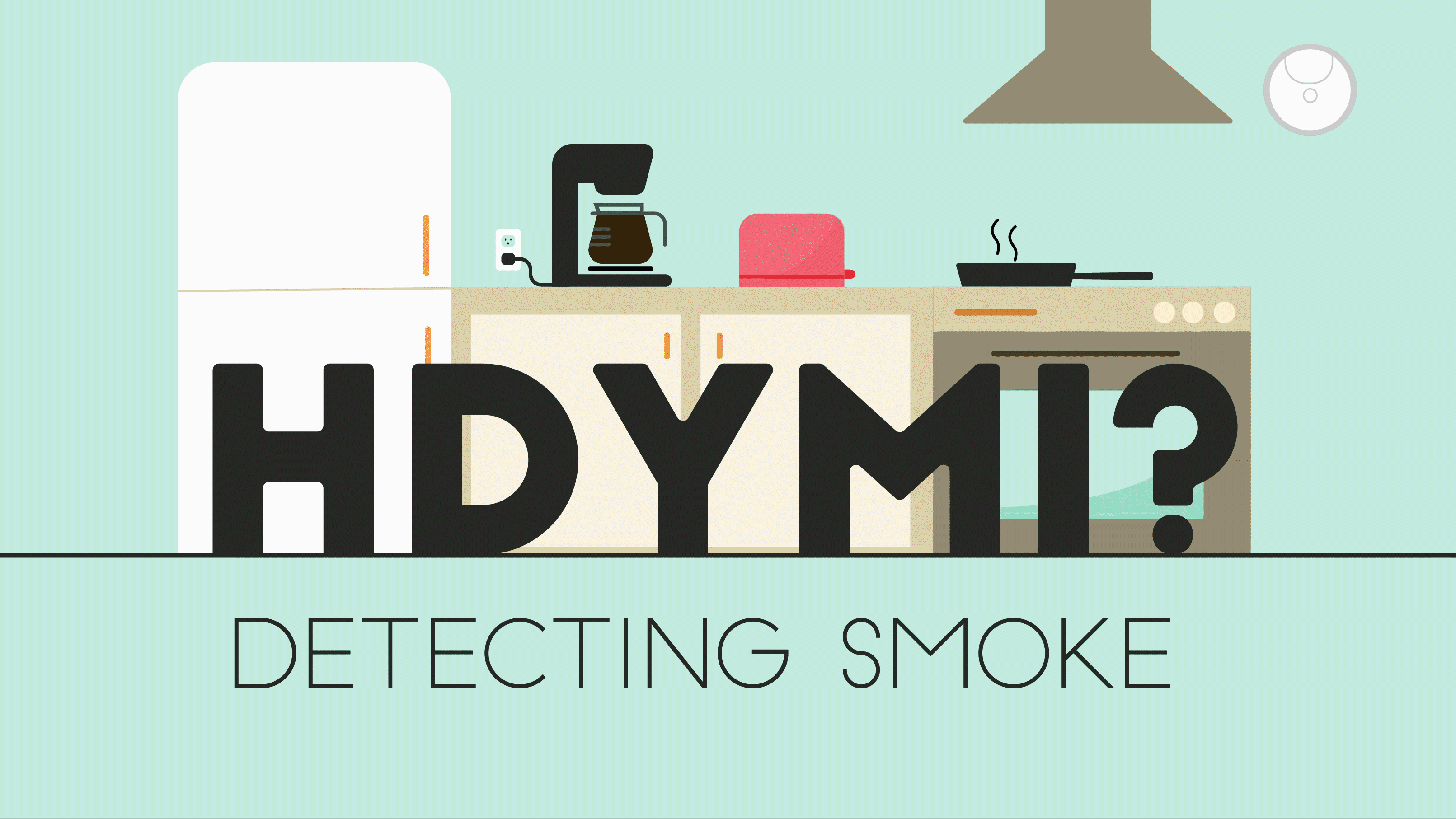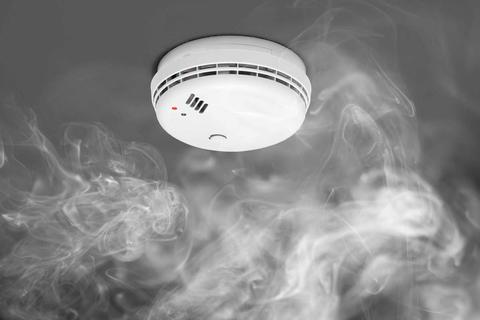How Do Smoke Detectors Work?

Smoke alarms save lives. According to the National Fire Protection Association (NFPA), having working smoke alarms in your home cuts your risk of dying in a fire by 55%.
But how do smoke alarms work in the first place?
Smoke alarms detect particles in the air. They most commonly do this using two types of detection technologies.
First, there are ionization detectors. These use a small bit of safely shielded radioactive material that electrically charges, or ionizes, the air molecules between two metal plates. This produces a small electric current flowing from one plate to the other in the air. When particles enter the chamber, they attract the ions and carry them away, reducing the current. When the number of particles entering the chamber is enough to reduce that current below a certain amount, the device will register those particles as smoke and the alarm will sound. (And about that radioactive material? Most of its radiation is blocked inside the device, and even then, the radiation levels in the device are much lower than the natural background radiation to which we are exposed every day.)
The other type of commonly used detection technology is called photoelectric. This technology works by detecting light that is reflected off particles from a light beam inside the sensing chamber. When no particles are present in the sensing chamber, the light from the beam does not strike the light detector, indicating all clear. When there are particles present and the amount of light registered by the light detector reaches a certain threshold level, the alarm sounds.

Both kinds of detectors can detect either slow-burning “smoldering” fires or fast-burning “flaming” fires, but each technology has its particular strengths. Ionization-based alarms tend to detect small black soot particles from flaming fires more quickly because they are produced in greater numbers and take away more current from between the plates. Photoelectric detectors tend to be more sensitive to particles that are larger in size and white or light-colored, and thus more reflective, like those emitted by smoldering fires.
The NFPA advises that people have both ionization and photoelectric units in their homes. And dual-sensor alarms that combine both technologies are also available.
As important as smoke alarms are for protecting your family and your property, many times they can be a nuisance. Smoke alarms near kitchens can detect the particles coming off your food as it cooks, even if you don’t burn it. Sometimes something as simple as turning on a toaster can set them off.
So as with many safety measures, smoke detectors have a trade-off. They can be made sensitive enough to detect almost any smoke. But if they did, they would detect the smoke you don’t want them to detect (such as from cooked food) and even other things such as dust. Less sensitive detectors would have fewer nuisance alarms, but in an actual fire, they may not go off in time to save lives or property. Or they may not give off a signal at all.
Researchers are developing new tests and standards to make smoke alarms better at detecting the kinds of smoke we want them to detect and not the kinds we don’t, so we’re never tempted to disable the alarms and put ourselves in danger. As a result, the next generation of smoke detectors promises to cut down on the number of nuisance alarms while also signaling real fires more quickly. And with fire, time is everything when it comes to saving lives and property.

